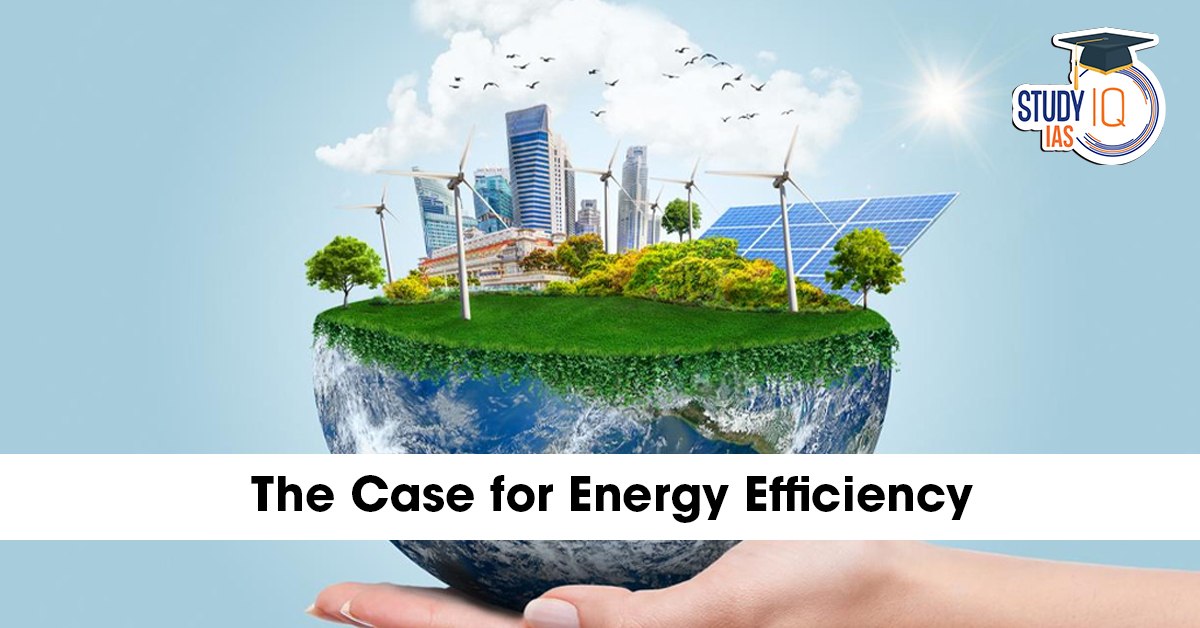Table of Contents
India’s transition to a cleaner energy future has been impressive — as of June 2025, non-fossil fuel sources account for about 50% of total installed electricity capacity.
However, the grid emission factor — the amount of CO₂ emitted per megawatt-hour (MWh) of electricity generated — has risen from 0.703 tCO₂/MWh in 2020–21 to 0.727 tCO₂/MWh in 2023–24.
This means that the power consumed today is dirtier than it was five years ago, despite more solar and wind power being added.
This apparent contradiction exposes the complexities of India’s decarbonization journey, driven by:
-
The mismatch between capacity and generation,
-
Timing issues in renewable supply and demand, and
-
The underutilized potential of energy efficiency.
The Capacity–Generation Mismatch
India’s renewable energy progress is often measured by installed capacity, not actual power generation.
But capacity ≠ energy produced.
Why This Happens:
-
Solar and wind power are intermittent — their capacity utilization factor (CUF) is only 15–25%.
-
Coal and nuclear plants operate at 65–90% utilization.
So, even though half of India’s installed capacity is non-fossil, renewables provide only ~22% of actual electricity generation.
The Result:
The remaining 78% still comes from fossil fuels, especially coal, which continues to fill the growing demand gap in a rapidly expanding economy.
Thus, total emissions rise even as renewable capacity increases — a clear “clean energy paradox.”
Temporal Demand–Supply Challenges
India’s electricity demand profile further complicates the problem.
When Supply and Demand Don’t Match
-
Solar power peaks in the afternoon, but demand spikes in the evening, as households and commercial areas consume more electricity.
-
Wind patterns are seasonal and unpredictable.
This mismatch forces coal-based power plants to act as backups, especially during evening peaks and nighttime.
The Consequence
Even with high renewable capacity, coal remains indispensable to stabilize the grid.
Without energy storage and flexible grid systems, India’s renewable power can’t fully replace fossil fuels.
Round-the-Clock Renewable Solutions – Emerging but Slow
India is developing Round-the-Clock (RTC) renewable energy systems that combine solar, wind, and battery storage to ensure consistent power supply.
These systems are now cost-competitive with new coal plants, but scaling them faces hurdles:
-
Large-scale land acquisition challenges,
-
Transmission infrastructure delays,
-
Limited long-term financing for storage projects.
Hence, while RTC solutions are promising, progress remains slow, and coal continues to bridge the reliability gap.
Energy Efficiency: The Overlooked Solution
Energy efficiency — often called the “first fuel” — can dramatically reduce emissions before they even occur.
Rather than generating more power, efficiency cuts demand, easing the load on fossil-fuel plants.
Benefits of Energy Efficiency:
-
Lowers total energy consumption
-
Reduces peak load, making grid management easier
-
Integrates renewables more effectively
-
Saves money for consumers and industries
According to the Bureau of Energy Efficiency (BEE), India saved:
-
200 Million Tonnes of Oil Equivalent (MTOE) of energy, and
-
1.29 Gigatonnes of CO₂ emissions
between FY2017-18 and FY2022-23 — a testament to the transformative potential of efficiency-driven policies.
Key Efficiency Measures:
-
Energy-efficient lighting, cooling, and appliances
-
Smart building designs and green codes
-
Efficient industrial machinery and motors
-
Demand-side management (DSM) to shift usage to off-peak hours
For India’s fast-growing economy, energy efficiency isn’t optional — it’s strategic.
Policy Directions for a Flexible, Low-Carbon Grid
To translate renewable capacity into genuinely clean power, India needs complementary policy reforms focusing on flexibility, technology, and behavior.
1. Virtual Power Plants (VPPs)
Enable households and small businesses to store and share energy using batteries or rooftop solar, feeding power back to the grid during high-demand periods.
2. Stronger Appliance Standards
Enforce higher efficiency standards for home appliances, industrial equipment, and air-conditioning systems under programs like BEE’s star rating scheme.
3. Incentivize Small Industries
Provide tax credits and loans for energy-efficient machinery and cleaner technologies, especially for MSMEs.
4. Dynamic Electricity Pricing
Introduce time-of-day pricing to shift consumption toward periods of high renewable availability, reducing fossil fuel reliance during peaks.
5. Retirement of Inefficient Assets
Scrap outdated coal plants and allow distribution companies (DISCOMs) to procure green, efficient services like cooling-as-a-service or renewable microgrids.
Projected Emission Reductions
The Central Electricity Authority (CEA) projects India’s grid emission factor will fall to:
-
0.548 tCO₂/MWh by 2026–27
-
0.430 tCO₂/MWh by 2031–32
Achieving this, however, demands not just renewable expansion, but a focus on energy efficiency, storage, and flexibility in grid management.
The Strategic Role of Energy Efficiency in Decarbonization
Why Efficiency Matters:
-
Reduces demand growth by decoupling energy use from GDP growth.
-
Provides immediate, low-cost emission reductions.
-
Enhances energy security by reducing fuel imports.
-
Enables cleaner integration of renewables into the grid.
The Global Perspective:
Countries like Japan, Germany, and South Korea have shown that energy productivity improvements can achieve emission reductions equivalent to renewable expansion — often at half the cost.
For India, with its rising urbanization and cooling demand, focusing on efficiency-first policies can be a game-changer.
The Way Forward
A cleaner grid requires more than adding solar panels and wind farms.
It needs a system redesign centered on:
-
Energy efficiency as the first line of defense,
-
Advanced energy storage systems,
-
Flexible grid operations, and
-
Dynamic policy and pricing frameworks.
Efficiency, flexibility, and innovation must work hand in hand to ensure India’s clean capacity translates into truly clean electricity.
Conclusion
India’s rising renewable capacity alongside increasing emissions underscores a critical lesson — decarbonization is not just about capacity; it’s about efficiency.
Energy efficiency should be treated as the foundation of India’s clean energy strategy, supported by smart grids, energy storage, and behavioral change.
By embracing efficiency as the “first fuel” and prioritizing system flexibility over fossil-based backup power, India can bridge the paradox of “clean capacity, dirty power,” ensuring a sustainable, low-carbon future.


 National Maritime Heritage Complex (NMHC...
National Maritime Heritage Complex (NMHC...
 Reforming Fertiliser Subsidy in India: N...
Reforming Fertiliser Subsidy in India: N...
 Micrometeoroids: Tiny Space Particles, M...
Micrometeoroids: Tiny Space Particles, M...

























